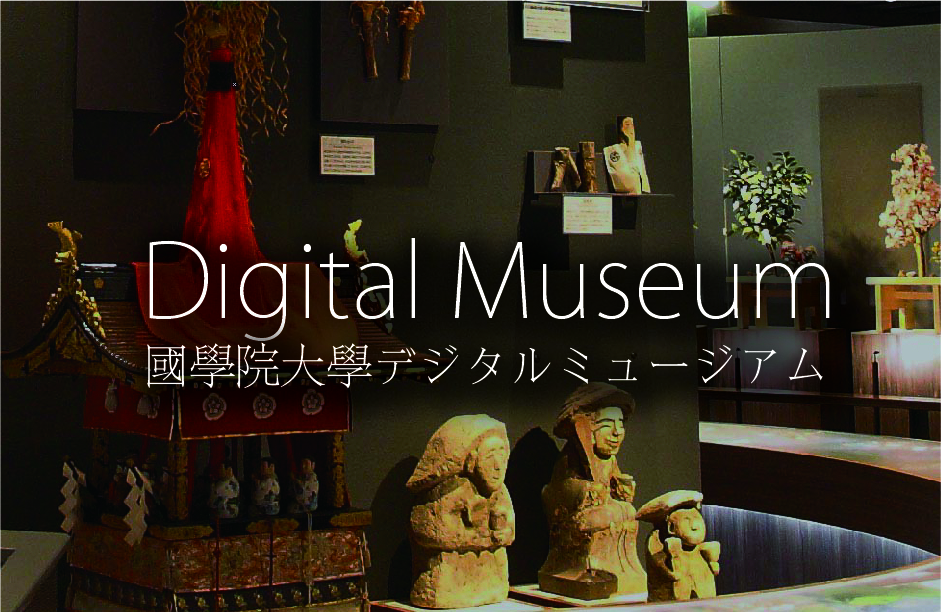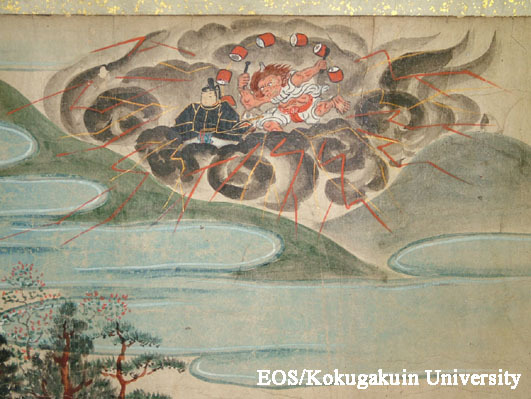- トップ
- Encyclopedia of Shinto
- Raijin
Encyclopedia of Shinto
| Main Menu: | |
| Links: |
詳細表示 (Complete Article)
| カテゴリー1: | 2. Kami (Deities) |
|---|---|
| カテゴリー2: | Kami in Folk Religion |
| Title | Raijin |
| Text | "Thunder kami." In ancient times, thunder and lightning were considered atmospheric expressions of the violent behavior of a thunder kami, and lightening striking earth was interpreted as the kami's temporal manifestation. The term for thunder, kaminari can be read to mean kami "sounding" (nari), while lightning strikes are sometimes called kandachi, a word meaning "kami standing." For farmers, the raijin was viewed as a tutelary of agriculture, one linked to the appearance of rain. The close relationship between farming and the raijin is also illustrated by the fact that terms for lightning, inazuma and inabikari, include the element ina, a word referring to rice stalks. Other evidences of raijin's character as a kami of farming and water include the belief that lightning was responsible for fertilizing the rice plant, the belief that a bountiful harvest would be assured if fresh-cut bamboo and taboo ropes ( shimenawa ) were erected at the site of a lightning strike in a farm field, and the practice of holding rain invocations (amagoi) at shrines dedicated to the raijin. At the same time, the raijin also possessed characteristics as a violent kami of disaster with terrifying power. In some areas, the sound of thunder during rice transplanting season would prompt the performance of a kandachioi, a rite involving the striking of split bamboo or affixing scythe blades to the end of bamboos as a symbolic exorcism of the raijin. Many areas similarly perform special conjuries to protect against disasters from lightning. The nature of raijin as a kami of calamity can be ascertained from scattered passages of the Kojiki describing Izanagi's trip to the underworld (Yomotsukuni), but the most important historical source leading to its emphasis was the Heian-period association of raijin with the cult of goryō, vengeful spirits of the dead. With the addition of beliefs regarding goryō, the simple cult of raijin found among the residents of Kyoto evolved into a belief that lightning strikes represented the manifestation of the goryō's curse. Further, when this belief was associated with the vengeful spirit of the wrongfully accused courtier Sugawara no Michizane, it resulted in the emergence of a cult to the kami Karai Tenjin ("fire-and-thunder-heavenly-kami"), and raijin came to be widely worshiped as one figure within the cult of "heavenly kami" (tenjin). Ancient texts associate the raijin's appearance with serpents or a small child, but from around the Kamakura period, pictures and sculptures of raijin portrayed a demonic form holding a whip and surrounded by a ring of linked drums. -Suzuki Kentarō |





